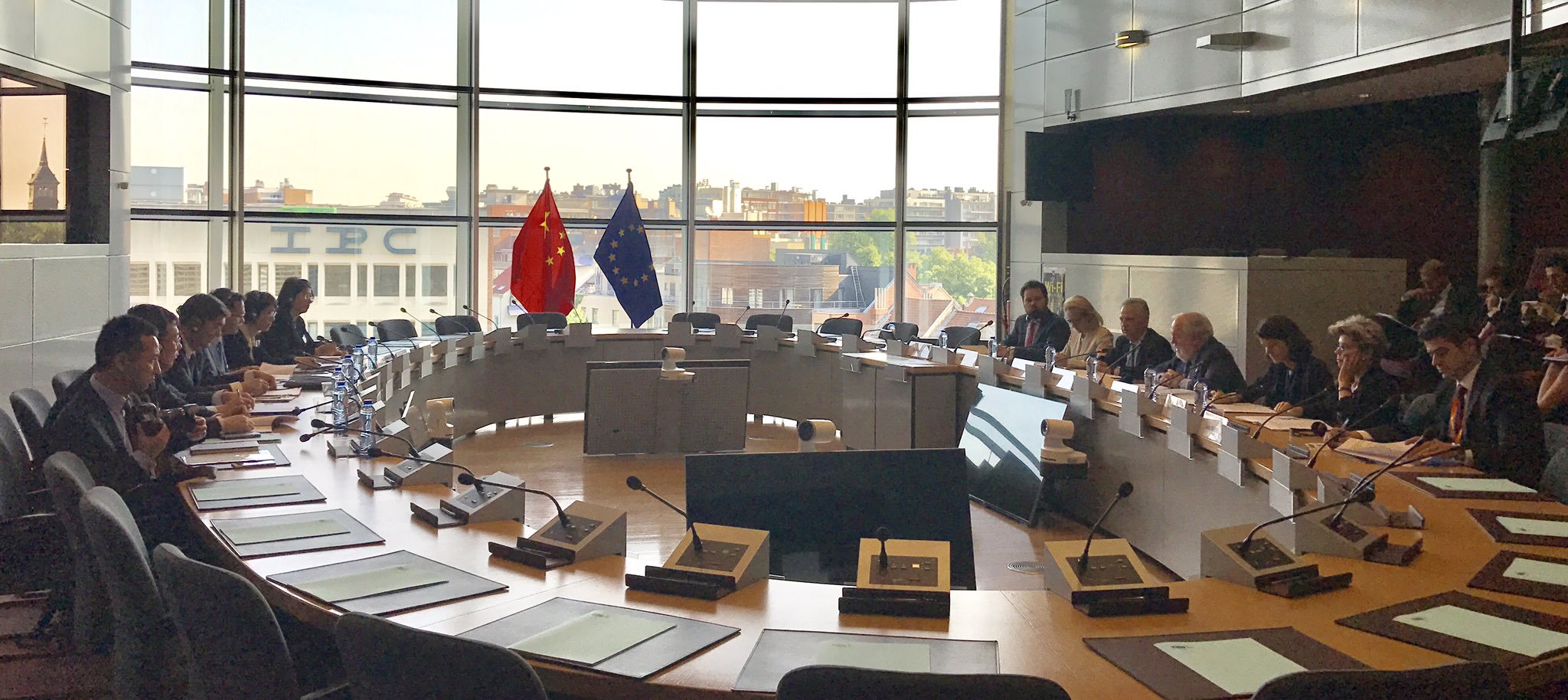Do China and the European Union have what it takes to remodel the global order? At least this is what some energy commentators were asking themselves upon the signing of deeper cooperation on fighting climate change.
In light of President Trump rescinding the United State’s commitment to ratify the Paris climate accords, the EU-China agreement signed in Brussels on June 2nd 2017 signals at least two things: the strengthening of EU-China’s energy cooperation, a keystone of their strategic partnership, and an increase in China’s role on the world stage through a small political concretisation of its economic power.
No country left behind?
For Miguel Arias Canete, the EU’s climate commissioner, the explication is simple: «No one should be left behind, but the EU and China have decided to move forward. Our successful cooperation on issues like emissions trading and clean technologies are bearing fruit. Now is the time to further strengthen these ties to keep the wheels turning for ambitious global climate action.»
In other words, the 194 remaining signatories now have a firm commitment from two of the world’s biggest polluters. The United States accounts for 18% of global greenhouse gas emissions, ahead of the EU (13%) and Russia (7%) but behind China, who accounts for 20% of emissions. As part of the agreement signed on June 2nd, both sides promised to help reduce their carbon footprint. The EU has pledged to provide China with €10 million to support its own emissions trading system, and both parties pledged its support to mobilise at least €100 billion a year by 2020 to help poor countries with the impacts of global warming.
The EU-China Roadmap
There is nothing new about EU-China energy cooperation, this simply signals the desire of both parties to up the tempo. Dialogue was established in 1981 and institutionalised in 1997 with the creation of an annual EU-China energy summit. The summit measured their progress on two main topics: energy security and energy efficiency, specifically, best practice sharing on nuclear safety for the former, and smart grids, urban development and clean coal development for the latter. Meanwhile, climate change cooperation began in earnest in 2005, bringing us to the current phase of intensified relations that began in May 2012 with the creation of the EU-China High-Level Meeting, via two agreements, one on urbanisation, the other on energy cooperation. The deal was signed by Chinese Vice Premier, now Premier, Li Keqiang and the then President of the European Commission Emmanuel Barroso.
The agreement continues in the steps of the EU-China Roadmap aimed at speeding up the transition towards a low-carbon economy. Textually we see a lot of «enhancing mutual trust on market-related issues», or «contributing to the sustainable development of the global energy system». In practice, this should yield additional R&D development contracts for European firms and reduced costs for Chinese energy firms seeking to invest in renewables in Europe.
The 2016 Roadmap is an interesting text because of the detail it gives on renewables, through a focus on reducing development costs, expanding the biogas sector by increasing methane production, and a big emphasis on energy efficiency. The latter represents the interest of Chinese officials to benefit from the EU’s leading position in the cogeneration industry, seeking to share best-practice in public policy planning along with the objective of adding a substantive CHP dimension to ongoing Chinese urban development. Cogeneration, or combined heat and power (CHP) is the simultaneous use of a heat engine to generate electricity and useful heat, making it possible for energy suppliers to massively reduce their energy waste, and therefore enabling a lower running cost of their plants while helping public authorities reach their energy efficiency target. The EU generates 11% of its electricity using cogeneration and includes the world leaders in the business: Denmark, the Netherlands and Finland with between 60% to 80% of their power produced through this method.
A powerful trading relationship
These deepening energy ties could be a sign of the shape of things to come as the EU and China gear up to, slowly but surely, deploy a more cohesive voice on the governance agenda of the global economy. Traditional defenders of free trade like the United States and the United Kingdom are engulfed in domestic political scandal and flirt with protectionist politics, leaving China’s President Xi Jinping to announce in 2017 that his country is developing free trade, promotes liberalisation and says «no» to protectionism.
Picture: Miguel Arias Canete Twitter
1 comment













1 Comment
Duncan
12/08/2017, 11:46 pmAre there any mid year conferences that take place around South Africa
REPLY